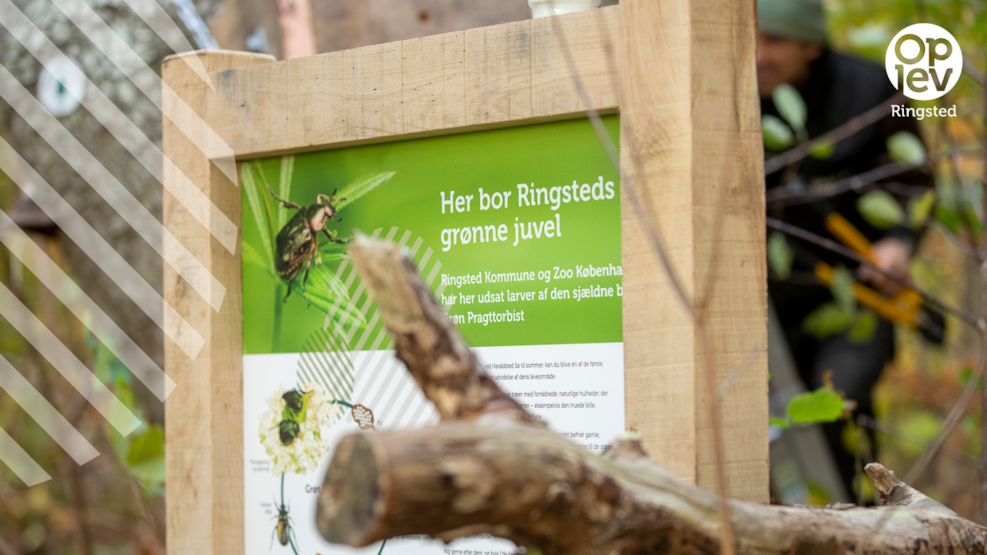
Vrangeskov ( forest )
Vrangeskov is known for its twisted beeches (vrange bøge), which have uniquely gnarled and crooked trunks.
At the car park there used to be the old Traktørsted located in the old building, which previously also served as a residence for the source's wife. Here you can settle down with coffee/lunch. However, there are no tables and benches. A path leads down to the lake and spring. The spring can still be seen at the lake's edge. The view is unique and a number of interesting plants grow here.
A 1.1 km stretch of the Ringsted Experience Path leads through Vrangeskov.
Gnorimus nobilis (grøn pragttorbist)
Gnorimus nobilis with local ancestry
It was originally thought that the green beetle was extinct, but in 2012 six specimens of the rare beetle were found in Allindelille Fredskov.
Since then, Zoologisk Have Copenhagen (ZOO) has worked actively to preserve the gnorimus nobilis. ZOO has bred with the found beetles for four generations. For four years they have had a population running in the ZOO and also released a population in the area they were found in, namely Allindelille Fredskov, where 500 larvae were released in nest boxes on 14 November 2019.
Probably been here since the Ice Age
On Wednesday 9 November 2022, 164 larvae moved out into two nest boxes in Vrangeskov. Ringsted Municipality's green guide Lars Berndt and ZOO project coordinator Eddie Bach were the hosts when the public was invited to the release.
"In addition to securing the area they were in, we have also worked to make the area larger," said Eddie Bach in connection with the release of the larvae. Eddie Bach also said that the green magpie has probably been here since the ice age, but due to the fact that the forest, nature and landscape have changed, it has become more and more difficult to be a green magpie. In the end, they were down to a population of one tree on Zealand and a very small population at Frijsenborg.
Elder trees are necessary for gnorimus nobilis
The larvae have been moved to nest boxes because there are not enough hollow trees. They are supposed to hatch around midsummer, turn into beetles and fly out and find real trees to live in.
Gnorimus nobilis can be a larva for up to a year - or perhaps 2-3 years if there is not enough food. Then they hatch and are only beetles for typically 2-4 weeks. Shrubs must be present in order for the gnorimus nobilis to live, because they feed on nectar and pollen from the white umbel plant.
Gnorimus nobilis is often confused with green golden bass.
Follow the development
If you would like to follow the development from now until around Midsummer, when the exposed larvae would like to turn into beetles, you can contact Ringsted Municipality's Green Guide Lars Berndt at lfbe@ringsted.dk or tel. 22 32 75 10.